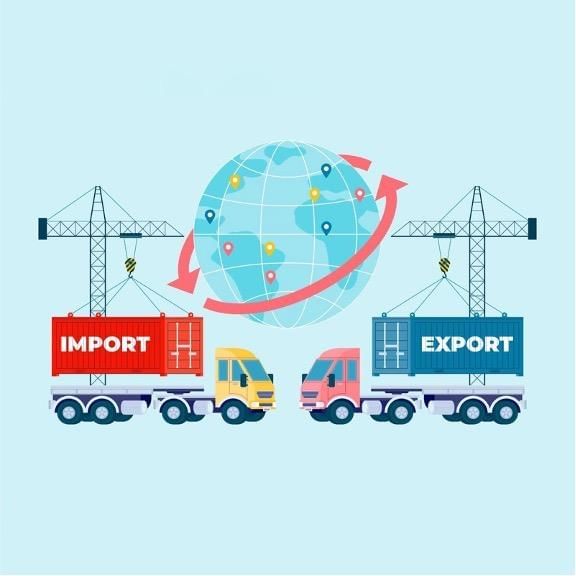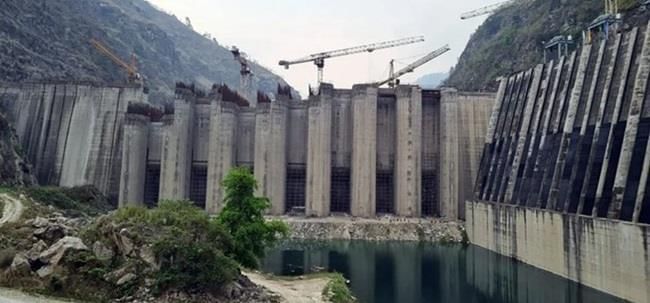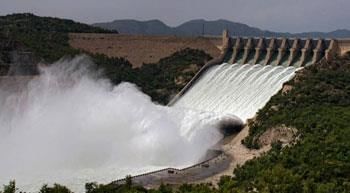UPSC Daily Current Affairs: 28th August 2025 | Current Affairs & Hindu Analysis: Daily, Weekly & Monthly PDF Download
GS3/Economy
US Tariffs on Indian Exports: Challenges and Opportunities for Diversification
 Why in News?
Why in News?
The United States has implemented steep tariffs of 50% on Indian exports since August 27, impacting key sectors such as textiles, gems, and jewellery. This has raised concerns and discussions about the need for trade diversification.
Key Takeaways
- The 50% tariffs have rendered many Indian goods uncompetitive in the US market.
- India's growing dependence on the US market highlights the risks associated with concentrated trade relationships.
- This situation has triggered calls for significant policy reforms and diversification of trade partnerships.
Additional Details
- Impact of Tariffs: The tariffs have particularly affected labour-intensive exports such as textiles and jewellery, leading to production halts in key hubs like Tirupur and Surat.
- Dependence on the US Market: As of 2024, the US accounted for 18% of India's exports, up from 11% in 2010, indicating a growing reliance that poses risks for trade stability.
- Policy Space for Reform: The current crisis has prompted policymakers to explore diversification strategies, including expanding trade with regions like Africa, Latin America, and Southeast Asia.
- Domestic Measures: Exporters are urging the government to facilitate domestic procurement and offer a relief package to mitigate the impact of the tariffs.
- Positive Outcomes: This situation could lead to accelerated trade reforms and greater multilateral engagement, allowing India to strengthen its trade relationships outside of the US.
In summary, while the 50% tariffs imposed by the US present significant challenges for Indian exporters, they also offer an opportunity to rethink and diversify India's trade strategies. This may lead to a more resilient economic framework in the face of external pressures.
GS2/Governance
Project Aarohan: Supporting Education for Children of Toll Plaza Employees
Why in News?
Recently, the National Highway Authority of India (NHAI) launched Project Aarohan, aimed at supporting the educational aspirations of children whose parents are employed at toll plazas across the country.
Key Takeaways
- The initiative targets children from economically weaker sections, including girls from low-income households and first-generation learners.
- It aims to provide equal access to quality education while addressing financial barriers and bridging socio-economic divides.
- Project Aarohan combines financial aid with mentorship, skill-building workshops, and career guidance.
Additional Details
- Implementation: The project will be executed by SMEC Trust’s Bharat Cares.
- Fund Allocation: The first phase of the project has a budget of Rs. 1 Crore, running from July 2025 to March 2026.
- The initiative intends to support 500 students from Class 11 to their final year of graduation, with each student receiving an annual scholarship of Rs. 12,000 during FY 2025-26.
- Additionally, 50 exceptional students aiming for postgraduate and higher studies will receive scholarships of Rs. 50,000 each.
This project represents a significant step towards enhancing educational opportunities for children of toll plaza employees, aiming to create a more equitable educational landscape.
GS3/Defence & Security
Integrated Air Defence Weapon System (IADWS) - India’s Maiden Test of Indigenous Air Defence System
Why in News?
The Defence Research and Development Organisation (DRDO) has successfully conducted the maiden flight test of the Integrated Air Defence Weapon System (IADWS) off the coast of Odisha. This achievement signifies a crucial advancement in India's pursuit of self-reliance in advanced defence technology, aligning with the Atmanirbhar Bharat initiative.
Key Takeaways
- The IADWS features a three-layered defence structure.
- Successful neutralisation of aerial threats, including UAVs and drones, during flight tests.
- Incorporation of multiple technologies developed by DRDO over time.
Additional Details
- Three-layered Defence Structure:
- Quick Reaction Surface-to-Air Missile (QR-SAM): Range of 30 km.
- Very Short Range Air Defence System (VSHORADS): Effective range of up to 6 km.
- Directed Energy Weapon (DEW): High-power laser with a range of 2–4 km.
- The operational mechanism is controlled by a Centralised Command and Control Centre, developed by the Defence Research and Development Laboratory (DRDL).
- The IADWS integrates technologies from various DRDO labs, stemming from the Integrated Guided Missile Development Programme (IGMDP) initiated in 1983 by A P J Abdul Kalam.
- Public-private Synergy: Transfer of DRDO technology to the private sector, exemplified by Carborundum Universal Limited (CUMI) licensed for manufacturing critical ceramic radomes.
- Global Collaborations: Learning from Israel's multi-layered air defence systems, such as the Iron Dome and David's Sling, to enhance India's capabilities.
The successful test of the IADWS marks a significant milestone in India's development of a multi-layered, indigenously developed air defence architecture, aiming to reduce dependence on foreign technology. Future collaborations, particularly in advanced air defence systems, will bolster India's strategic autonomy and enhance its industrial growth through public-private partnerships.
GS3/Economy
What is the Export Promotion Mission?
 Why in News?
Why in News?
The government is contemplating support measures amounting to approximately Rs 25,000 crore for exporters as part of the Export Promotion Mission, which was announced in the Budget for the financial years 2025 to 2031.
Key Takeaways
- The Export Promotion Mission is a flagship initiative introduced in the Union Budget for 2025-26.
- The goal is to facilitate broad-based, inclusive, and sustainable export growth over a six-year period (FY 2025-31).
- This initiative will explore innovative approaches to tackle significant challenges faced by Indian exporters, particularly Micro, Small, and Medium Enterprises (MSMEs).
Additional Details
- Jointly Driven By: The initiative is being implemented collaboratively by the Ministries of Commerce and Industry, Micro, Small and Medium Enterprises, and Finance.
- Objectives: To enhance export competitiveness through improved access to export credit and assistance in overcoming non-tariff barriers in global markets.
- Lead Department: The Department of Commerce is the primary department overseeing this mission.
- The mission will be executed via two sub-schemes:
- Niryat Protsahan: Allocated over Rs 10,000 crore.
- Niryat Disha: Allocated over Rs 14,500 crore.
- Main Elements of Niryat Protsahan:
- Interest equalisation support exceeding Rs 5,000 crore over the six financial years (2025-2031).
- Support for alternative trade finance instruments.
- Introduction of a credit card specifically for e-commerce exporters.
- Other financing mechanisms to address liquidity challenges faced by exporters.
- Proposed Components of Niryat Disha:
- Support for export quality compliance (around Rs 4,000 crore).
- Overseas market development (over Rs 4,000 crore).
- Branding, export warehousing, and logistics.
- Capacity building to integrate more Indian enterprises into global value chains.
This initiative marks a significant step towards enhancing India's export capabilities and addressing the challenges faced by exporters, particularly MSMEs, in the global marketplace.
GS3/Environment
Gorumara National Park: A Conservation Success
 Why in News?
Why in News?
The population of the greater one-horned rhinos at Gorumara National Park in Jalpaiguri has seen a positive increase with the recent birth of two rhino calves, marking a significant win for conservation efforts in the region.
Key Takeaways
- Gorumara National Park is located in Jalpaiguri, West Bengal.
- It covers an area of approximately 79.45 sq.km and was established as a national park in 1992.
- The park is renowned for its rich biodiversity, particularly the endangered one-horned rhinoceros.
Additional Details
- Location: Gorumara National Park is situated in the Terai region of Dooars, at the foothills of the Eastern Himalayas, alongside the Murti and Raidak rivers.
- Flora:The park features a variety of vegetation, including:
- Sal forests with Common Teak and Rain Trees (Albizia lebbeck)
- Bamboo groves and Terai grassland
- Tropical riverine reeds and numerous tropical orchids
- Fauna:The park is home to a diverse array of wildlife, including:
- Indian rhinoceros
- Asian elephant
- Indian bison
- Leopard, sambar deer, barking deer, spotted deer, and wild boar
- Various bird species like peafowl, red jungle fowl, and the Indian hornbill
- Greater One-Horned Rhino:
- Scientific Name: Rhinoceros unicornis
- Distribution: Found in India and Nepal, particularly in the Himalayan foothills.
- Habitat: Prefers semi-aquatic environments, swamps, forests, and areas near nutritious mineral licks.
- Physical Characteristics: Males weigh around 2,200 kg and have a distinctive single horn that can be 8-25 inches long.
- Behavior: Generally solitary, except for females with calves; primarily grazers feeding on grasses, leaves, and aquatic plants.
- Conservation Status: Classified as Vulnerable on the IUCN Red List.
The recent increase in the one-horned rhino population at Gorumara National Park highlights the ongoing conservation efforts and the importance of preserving such habitats for endangered species.
GS3/Environment
Punatsangchhu-II Hydroelectric Project
 Why in News?
Why in News?
The 1020 MW Punatsangchhu-II Hydroelectric Project in Bhutan has been successfully completed, with the final unit, Unit 6 (170 MW), now synchronized with the power grid, as reported by the Embassy of India in Thimphu.
Key Takeaways
- The project is a 1 GW run-of-the-river hydroelectric power facility.
- Located on the right bank of the Punatsangchhu River in the Wangdue Phodrang district.
- It significantly boosts Bhutan's power generation capacity by about 40% to over 3500 MW.
Additional Details
- Inter-Government Agreement (IGA): The project is developed under an IGA between the Royal Government of Bhutan and the Government of India, which funds the project with a 30% grant and 70% loan at 10% annual interest, repayable in 30 semi-annual installments starting one year after the operational date.
- Dam Specifications: The construction includes a 91 m-high and 223.8 m-long concrete gravity dam, an 877.46 m-long diversion tunnel with a discharge capacity of 1118 cubic meters per second, and sluice gates measuring 8 m wide and 13.20 m high.
- The underground powerhouse will house six Francis turbines, each with a capacity of 170 MW, operating at a water head of approximately 236 m.
The successful completion of the Punatsangchhu-II Hydroelectric Project marks a significant milestone in Bhutan's energy sector, reflecting the country's commitment to renewable energy and sustainable development.
GS1/Geography
Rivers, Dams, and Headworks of Punjab
 Why in News?
Why in News?
Floods have recently impacted villages in Punjab due to heavy rainfall in Himachal Pradesh and high dam discharges from the Bhakra, Pong, and Ranjit Sagar dams, along with regulated headworks flow.
Key Takeaways
- Punjab's rivers include the Sutlej, Beas, and Ravi, which play crucial roles in irrigation and hydropower.
- Major dams like Bhakra, Pong, and Ranjit Sagar contribute significantly to water management in the region.
Additional Details
- Sutlej: Originates from Rakshastal Lake in Tibet, enters India at Shipki La (HP), and flows into Punjab at Rupnagar. It merges with the Beas at Harike before joining the Chenab in Pakistan.
- Bhakra Dam: Located near Nangal on the HP-Punjab border, it is one of India's highest gravity dams, creating the Gobind Sagar Lake. It facilitates irrigation and hydropower generation.
- Headworks: Key structures that manage the flow of rivers. Examples include the Ropar headworks, which feeds Sirhind and BML canals in Punjab and Haryana, and the Hussainiwala headworks, supplying water to Bikaner and eastern canals in Punjab and Rajasthan.
- Pong Dam: Also known as Maharana Pratap Sagar, located in Kangra, HP, it is essential for irrigation and power generation, regulating the flow of Beas and Sutlej water to supply Rajasthan and Punjab canals.
- Ravi: Originates from Bara Banghal at Rohtang Pass, enters Punjab near Pathankot, and flows through Gurdaspur before entering Pakistan to join the Chenab.
- Ranjit Sagar Dam: Situated on the Punjab-Jammu & Kashmir border, it serves for irrigation and hydropower, with the Madhopur headworks feeding the UBDC canal in Punjab.
This information highlights the significant infrastructure in Punjab that is crucial for managing the water resources and the impact of recent climate events on the region's agriculture and population.
GS3/Science and Technology
Understanding Guillain-Barré Syndrome (GBS)
Why in News?
Recently, there has been an alarming increase in cases of Guillain-Barré syndrome (GBS) in Gaza, a condition that can lead to full-body paralysis in severe instances.
Key Takeaways
- GBS is a rare autoimmune disorder where the immune system attacks the peripheral nervous system.
- It commonly affects individuals aged 30 to 50 and can manifest at any age.
- The syndrome may follow a viral or bacterial infection, vaccination, or major surgery.
Additional Details
- What is Guillain-Barré Syndrome? GBS, also known as acute inflammatory demyelinating polyradiculoneuropathy (AIDP), affects the part of the nervous system outside the brain and spinal cord, which controls muscle movement and sensory signals.
- Symptoms: Initial symptoms often include an unknown fever, followed by progressive weakness and other nervous system-related issues that intensify over hours, days, or weeks. While some patients may only experience mild weakness, others can suffer from severe paralysis, potentially affecting their ability to breathe independently.
- Treatment: There is currently no known cure for GBS. However, various treatment options can alleviate symptoms and expedite recovery. Most individuals recover completely, although recovery may take several years, with many regaining the ability to walk within six months of the onset of symptoms.
In summary, while Guillain-Barré syndrome is a serious condition that poses significant challenges, awareness and prompt medical intervention can aid in recovery and improve outcomes for affected individuals.
GS3/Science and Technology
With Sci-Hub Gone, Will the ‘One Nation, One Subscription’ Scheme Step Up?
Why in News?
The recent blocking of Sci-Hub in India signifies a critical moment in the ongoing struggle between corporate publishers and the concept of open knowledge. The central issue revolves around the paradox of publicly funded research being placed behind steep paywalls. The government's One Nation One Subscription (ONOS) scheme, which allocates ₹6,000 crore, aims to make access to 13,000 journals more democratic for research institutions. However, there are significant concerns regarding its cost-effectiveness, inclusivity, and sustainability in the long term.
Key Takeaways
- The Delhi High Court's ruling against Sci-Hub is a landmark decision supporting publishers in copyright disputes.
- Publicly funded research is often monetized by private entities, which leads to exorbitant subscription costs.
- The ONOS initiative represents a large-scale attempt to bridge the knowledge access gap, yet its effectiveness remains in question.
Additional Details
- Distinctive Nature of Scientific Publishing:
- No royalties are paid to authors; researchers and peer reviewers work without compensation.
- Much of Indian scientific research is funded by taxpayers but is restricted to private access.
- Institutions face exorbitant subscription fees, with publishers justifying costs through claims of "quality control," despite significant profit margins.
- Global Controversy Around Sci-Hub:
- Sci-Hub has been ruled against for copyright infringement in various jurisdictions, including India.
- Many researchers relied on Sci-Hub for access to knowledge, especially those not affiliated with elite universities.
- Recent developments have shown a decline in Sci-Hub's relevance due to technical issues and an increase in open-access options.
- Vision of One Nation, One Subscription:
- The government plans to use ₹6,000 crore (2023-2026) for comprehensive access to 13,000 journals starting with public institutions.
- The initiative aims to provide equitable access, though private researchers may remain excluded until later phases.
The ban on Sci-Hub underscores the ongoing inequities in accessing scientific knowledge. While ONOS is a progressive step, it may only serve as a temporary solution unless accompanied by comprehensive reforms aimed at enhancing indigenous publishing capabilities, establishing national repositories, and implementing copyright retention policies. India’s goal should not merely be to alleviate symptoms of an exploitative system but to fundamentally transform knowledge into a public good.
GS3/Environment
Key Facts about Pong Dam
Why in News?
Recently, the water level at Pong Dam has breached the danger mark, raising concerns about potential flooding in the surrounding areas.
Key Takeaways
- The Pong Dam is also known as the Beas Dam and is located in the Kangra district of Himachal Pradesh.
- Construction of the dam began in 1961 and was completed in 1974, making it the tallest earth-fill embankment dam in India at that time.
- The dam created the artificial lake Maharana Pratap Sagar, named after a prominent ruler of Mewar.
- In 1983, it was designated as a bird sanctuary due to its diverse waterfowl population.
Additional Details
- Pong Dam: This earth-fill embankment dam stands 133 meters tall and stretches 1,951 meters in length, featuring a gravel shell.
- Reservoir Significance: The reservoir is a vital habitat for migratory birds and was designated as a Ramsar Wetland Site in 2002 due to its ecological importance.
- It supports various avifauna species, including Bar-headed Geese, Red-necked Grebe, and Common Teal, among others.
- The dam is crucial for irrigation and hydroelectric power generation in the region.
The Pong Dam not only serves significant economic purposes but also plays a critical role in biodiversity conservation, making it an essential feature of the Himalayan ecosystem.
GS1/Indian Society
Addiction, Not Play
Why in News?
The rise of online real-money gaming has transformed from a simple source of entertainment into a significant societal concern in India. With game designs that incorporate elements of gambling, these platforms have led to troubling outcomes for the youth, including addiction, financial issues, and mental health crises.
Key Takeaways
- Online real-money gaming mimics gambling mechanics, contributing to addiction.
- There is a noticeable increase in financial distress and mental health issues among children due to gaming addiction.
- Bans on gaming may provide temporary relief but do not address underlying issues.
- A comprehensive strategy is needed to combat gaming addiction effectively.
Additional Details
- Gambling-like mechanisms: Real-money games employ reward loops similar to those found in casinos, which are designed to keep players engaged and returning for more.
- Impact on families: Gaming addiction can create toxic home environments, leading to conflict, secrecy, and a breakdown of trust among family members.
- Mental health concerns: Conditions such as anxiety, depression, and suicidal thoughts have risen sharply among adolescents, signifying a critical public health challenge.
- Strategies for intervention: Effective measures include school-based mental health screenings, parental guidance training, and awareness campaigns targeted at students and educators.
In conclusion, addressing gaming addiction among India’s youth requires more than just restrictive measures. A balanced approach that combines effective regulation, mental health support, and educational initiatives is essential. This will not only safeguard children but also promote a healthier relationship with technology.
|
44 videos|5271 docs|1113 tests
|
FAQs on UPSC Daily Current Affairs: 28th August 2025 - Current Affairs & Hindu Analysis: Daily, Weekly & Monthly
| 1. What are the main challenges faced by Indian exporters due to US tariffs? |  |
| 2. How can Indian exporters leverage opportunities for diversification in response to US tariffs? |  |
| 3. What is the significance of Project Aarohan for the education of toll plaza employees' children? |  |
| 4. What are the key features of India's Integrated Air Defence Weapon System (IADWS)? |  |
| 5. How does the Export Promotion Mission aim to boost Indian exports? |  |
















